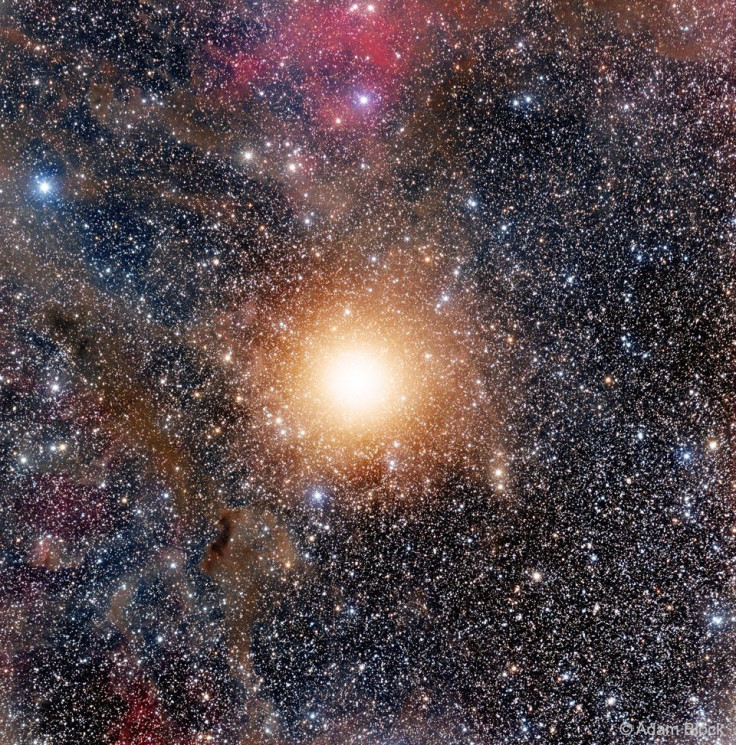NASA Shares Stunning Image Of Betelgeuse Star’s Bright Outburst

KEY POINTS
- NASA shared a stunning photo of the star Betelgeuse
- Betelgeuse is blocking the other bright stars in the Orion constellation
- Betelgeuse will cause a supernova event in about 100,000 years
NASA recently shared a stunning photo of the star known as Betelgeuse. Although the image showcases the brightness of the star, it also shows the other stellar objects hiding behind it.
Betelgeuse is a red supergiant location in the Orion constellation. It is one of the brightest objects in the sky visible from Earth.
Recently, NASA featured an image of Betelgeuse through its Astronomy Picture of the Day website. The image, which was taken by astronomy Adam Block of the University of Arizona, features the brightness of the massive star.
According to NASA, from Earth’s viewpoint, Betelgeuse blocks the other stars in the Orion constellation, drowning them out with its brightness.
“Betelgeuse, however, is actually well in front of many of the constellation's other bright stars, and also in front of the greater Orion Molecular Cloud Complex,” the agency explained. “Numerically, light takes about 700 years to reach us from Betelgeuse, but about 1,300 years to reach us from the Orion Nebula and its surrounding dust and gas.
Although Betelgeuse’s brightness is often attributed to its mass and current state, NASA noted that the blurring effect caused by the Earth’s atmosphere affects the star’s appearance. When viewed from Earth using ground-based telescopes, the star’s brightness appears extended.
“All but the largest telescopes see Betelgeuse as only a point of light, but a point so bright that the inherent blurriness created by the telescope and Earth's atmosphere make it seem extended,” NASA stated.
Over the past couple of months, Betelgeuse has caught the attention of the scientific community and general public due to the drastic changes in its brightness. Although other people believed that the dimming of the star indicated that it was about to go supernova soon, scientists noted that the decrease in brightness was probably caused by cosmic dust surrounding Betelgeuse.
However, even though the star’s brightness has already increased, scientists stated that Betelgeuse will still cause a supernova event in about 100,000 years. They believe that the event will be visible from Earth as a bright concentration of light in the sky.
© Copyright IBTimes 2025. All rights reserved.





















